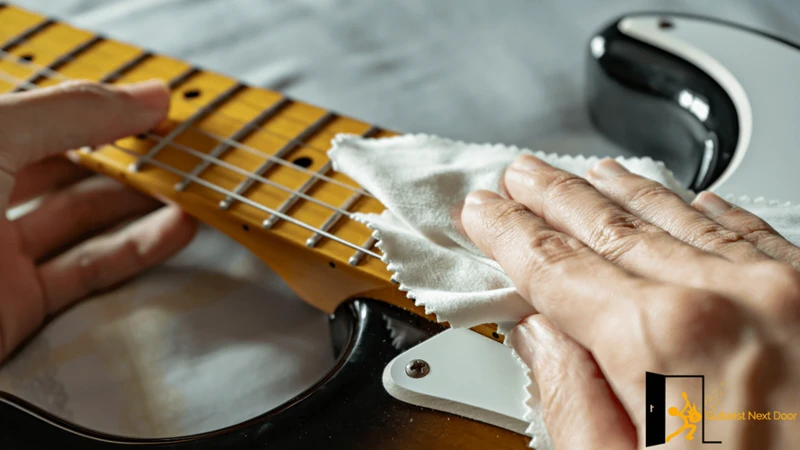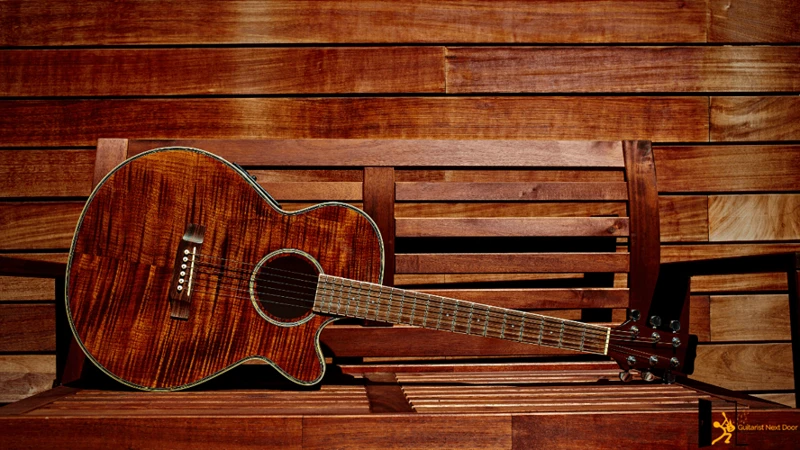Acoustic guitars are beautiful instruments that produce rich, melodious tones. To keep your acoustic guitar looking and sounding its best, regular cleaning and maintenance are essential. Using the right cleaning products can help maintain the instrument’s appearance and prolong its lifespan. In this article, we will explore five cleaning products that are safe and effective for use on acoustic guitars.
1. Guitar Polish
One of the most essential cleaning products for acoustic guitars is guitar polish. Guitar polish is specifically formulated to clean, shine, and protect the finish of your instrument. When choosing a guitar polish, opt for a high-quality product that is free of harsh chemicals that can damage the wood or finish of your guitar. Apply the polish with a soft, lint-free cloth, and gently buff the surface to restore its luster.
Key Points:
– Choose a guitar polish that is suitable for the type of finish on your acoustic guitar.
– Avoid using household cleaners or abrasive polishes, as they can strip the finish and damage the wood.
– Regularly polishing your guitar will help maintain its appearance and protect it from dirt and grime.
2. Fretboard Conditioner
The fretboard of an acoustic guitar is prone to dirt, sweat, and oil buildup from playing. To keep the fretboard clean and hydrated, a fretboard conditioner is essential. Fretboard conditioners are specially formulated to moisturize the wood, prevent drying and cracking, and remove dirt and grime. Look for a conditioner that is safe for use on your guitar’s specific type of wood, whether it is rosewood, ebony, or maple.
Key Points:
– Clean the fretboard with a soft cloth before applying the conditioner to ensure optimal absorption.
– Use a small amount of conditioner and spread it evenly across the fretboard with a cloth or applicator.
– Allow the conditioner to penetrate the wood for a few minutes before wiping off any excess.
3. Microfiber Cloth
A microfiber cloth is a versatile and handy tool for cleaning and maintaining your acoustic guitar. Microfiber cloths are soft, lint-free, and gentle on the guitar’s finish, making them ideal for wiping down the body, neck, and strings. Use a microfiber cloth to remove dust, fingerprints, and smudges without scratching or damaging the guitar’s surface.
Key Points:
– Keep a microfiber cloth handy during practice sessions and performances to quickly wipe down your guitar.
– Wash the microfiber cloth regularly to remove dirt and debris that can scratch the guitar’s finish.
– Avoid using paper towels or rough cloths, as they can leave behind fibers and potentially scratch the guitar.
4. String Cleaner and Lubricant
Strings are an essential component of an acoustic guitar, and keeping them clean and well-maintained is crucial for optimal sound quality and playability. String cleaner and lubricant are products designed to remove dirt, sweat, and oils from the strings, prolonging their lifespan and enhancing their tone. Regularly cleaning and lubricating your strings can also prevent rust and corrosion.
Key Points:
– Apply a small amount of string cleaner and lubricant to a cloth and run it along the length of each string.
– Gently rub the strings to remove debris and buildup, then wipe off any excess product.
– Regularly cleaning and lubricating your strings will improve their longevity and keep your guitar sounding its best.
5. Guitar Humidifier
Maintaining the proper humidity level is crucial for the health and longevity of your acoustic guitar, especially if you live in a dry climate or during the winter months when indoor heating can cause the air to become excessively dry. A guitar humidifier helps regulate the humidity inside the guitar case, preventing the wood from drying out, warping, or cracking. There are various types of guitar humidifiers available, including soundhole humidifiers and case humidifiers.
Key Points:
– Follow the manufacturer’s instructions for installing and using the guitar humidifier to ensure optimal performance.
– Check the humidity level regularly using a hygrometer and adjust the humidifier as needed to maintain the ideal humidity range.
– Using a guitar humidifier will help protect your acoustic guitar from damage caused by fluctuations in humidity.
Looking to keep your acoustic guitar in top condition? Check out our articles on cleaning techniques for acoustic guitars, must-have accessories for acoustic guitar players, and tips for cleaning your acoustic guitar. Don’t forget to also explore our recommendations for the best acoustic guitar cases and learn about the importance of cleaning your acoustic guitar regularly!
Conclusion
In conclusion, taking care of your acoustic guitar with the right cleaning products is essential for preserving its beauty and playability. By investing in quality guitar polish, fretboard conditioner, microfiber cloths, string cleaner and lubricant, and a guitar humidifier, you can keep your instrument looking and sounding its best for years to come. Regular cleaning and maintenance will not only enhance the appearance of your acoustic guitar but also ensure that it performs at its peak potential. Choose the appropriate cleaning products based on your guitar’s specific needs and materials, and enjoy playing your well-maintained acoustic guitar for many more years.



